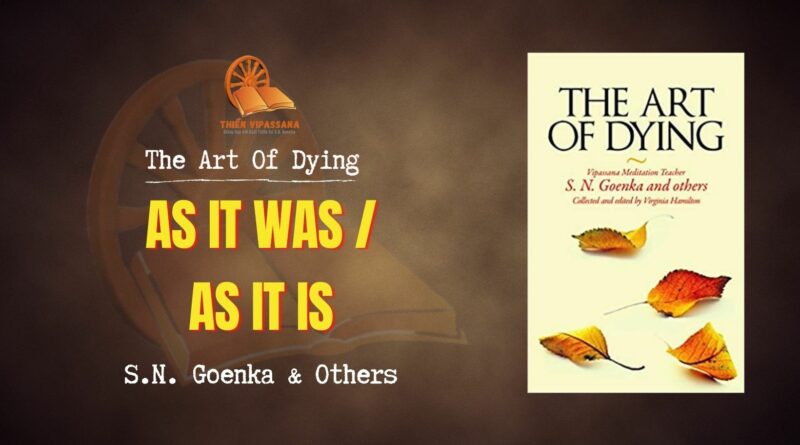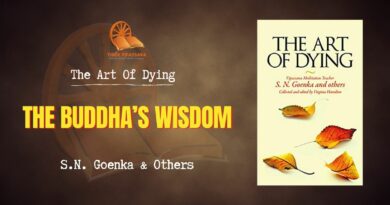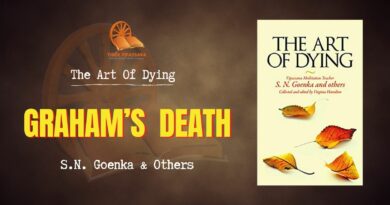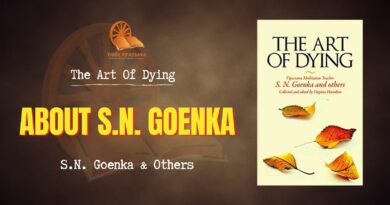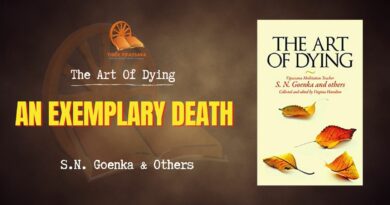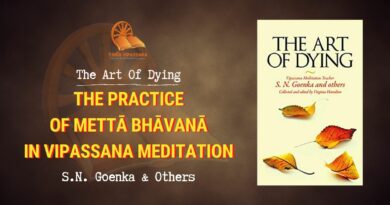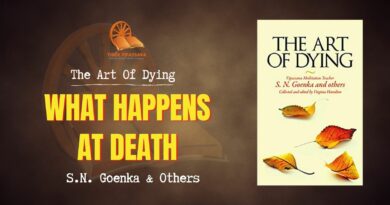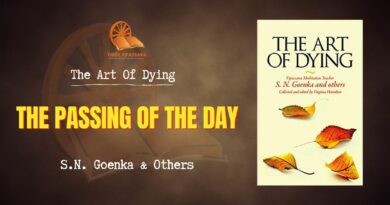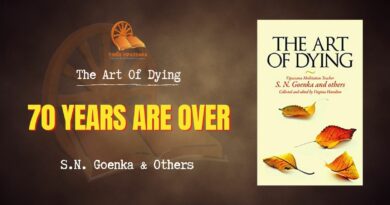As It Was / As It Is
On June 27, 1986, assistant teacher of Vipassana Graham Gambie died after a short illness.
Graham was among the earliest Western students of S.N. Goenka. After his first Vipassana course at Bodhgaya in 1971, Graham remained in India. From the time Dhamma Giri was purchased in November 1974, he lived, served and meditated there for the next five years. He was one of the first assistant teachers appointed by Goenkaji and, after returning to Australia in 1979, he worked tirelessly to help develop Dhamma Bhūmi, the first Vipassana center “down under.”
Graham was known to meditators around the world, many of whom he inspired with his Dhamma insight and enthusiasm. What follows is a brief memoir by Graham about his growth in Dhamma.
The thought arises that nearly twelve years have now gone past since my first tremulous arrival in India. Twelve years. Difficult to understand how it all happened or even what actually happened—but one thing is certain, and that is that it did happen. Twelve years.
Who was that person who arrived, driven out of his sanity by all the horrors of Western life and by his own loveless existence as well, with so many disappointments, with so many failed romances, with such a high opinion of himself, and with such a monstrous collection of memories and fears? What happened to that ape-like ancestor? The question often arises. It does not seem possible that he disappeared. That would be too much to hope for. It seems more likely that he never existed at all beyond the bundle of miseries and false hopes. What actually disappeared were the sufferings of yesterday, and what remains are the sufferings of today: the decay into middle age, the inability to adjust to reality, the shoddy burden of failed ambitions, the passions, the talkativeness.
But over the years has it become any easier to accept the anonymous nature of these miseries—to see that the present person is as unreal as his ludicrous predecessor? Oh no. Who gives in willingly to his own ego death? Who gives up the ghost smilingly, without a struggle? Perhaps that is why there is so little love in the world. All we know are those two phantoms, “You” and “I,” and not the dissolution of both, which is love.
There is no claim that in twelve years love and joy have taken full command of this mind so infested, as it is, with negativities. But certainly, a lot of the tension has unwound itself, much of the heat of hate has died down, and much of the fear hidden within has disappeared.
Having the power to produce the problem surely confers the right to apply the remedy also. And the only cure for agitations of one kind or another is silence. Looking back, it seems the real journey was not from one country to another, but from agitation to silence; from doing everything and achieving nothing, to doing nothing and letting everything occur. The simpler it is, the more difficult it is to understand. Only a silent mind can see things as they are, and this is the first and last step, the one and only thing to do: the letting be of being.
So many years spent just sitting as silently as possible, experiencing the terrifying collection of sensations, dreams, grasping, and fears that somehow have given rise to the idea of “Me.” Those who have never tried might imagine meditation to produce all kinds of ecstasies, spiritual visions, illuminations, and the kinds of things that books are full of. But the real peace is the relief from the terrifying banalities of everyday life, the petty likes and dislikes, the interminable conversations of the mind, the wished for, the lost, the abandoned.
And behind all that … is there anything beyond? Yes: a simple life getting simpler—an ordinary man finding real peace and happiness where he never looked before: in the ordinary things of life. Actually, there are no “ordinary” things of life. Coming to your senses out of your dreams, you find the ordinary is quite miraculous and the miraculous quite ordinary. It is only then that you realize, as one poet put it, that you are alive in search of life.
There is no magic or miracle beyond plain awareness. What can be more magical than a crystal-clear mind—motionless, silent? What can be more miraculous than to be beyond both the search for pleasure and the avoidance of fear? Many think that magic shows are given only on stage or by some bearded guru, without understanding that they themselves are the magic, the magician, the theatre, the audience, and, for that matter, the world too.
Who, living, has escaped the miseries and pleasures of this beastly/blissful world? Why seek security in a world where everything passes, where every final payment is a handful of dust? Why bother to try? What one cannot change, that one must accept. The choice is to accept it with good or bad grace. How your life would change if you could smile at everything!
Meditation then, like love, is not something that can be twisted to suit the ugly dictatorship of the “I.” It has practical by-products, but again like love, its end result is dissolution of the ego and its prison, the world. It is its own end, as love is its own reward. Achievements, success, prestige, and saving the world are all in the domain of the “Me” that wants so much and is capable of so little.
A superficial view of life can see only the miseries that produce pessimism, or pleasures that produce a feeling of optimism. In retrospect, the miseries of this mind seem the most valuable, since it was due to that unbearable pain that the search for a cure began. The pleasures too were helpful: through their brevity and unsatisfactory nature the desire arose to take the medicine, bitter as it is. Beyond hope and fear—the Truth. And slowly, ever so slowly, came the understanding that the disease is only in the mind.
To whom should one attribute all that has happened? Whom can we praise or blame for the inevitable? The law of Truth is a homeless orphan who has the disturbing habit of turning up anywhere, any time, completely uninvited, clothed in the strength of meekness, deafening in silence, invincible and empty-handed. This child is you and me.
And now what is to be done? Where to go from here? Where is forward, where back? What to do with all these possibilities, and with tomorrow? When we can obviously take it no more, shall we go on taking it? When will enough be enough? When will we stop to listen to the poet singing the last song:
In the rising of the light wake with those who awake, Or go on in the dream reaching the other shore Of the sea which has no other shore.
—Verse by Pablo Neruda, The Watersong Ends
Bài viết này được trích từ cuốn sách The Art of Dying – Thiền Sư S.N.Goenka và nhiều tác giả khác.

